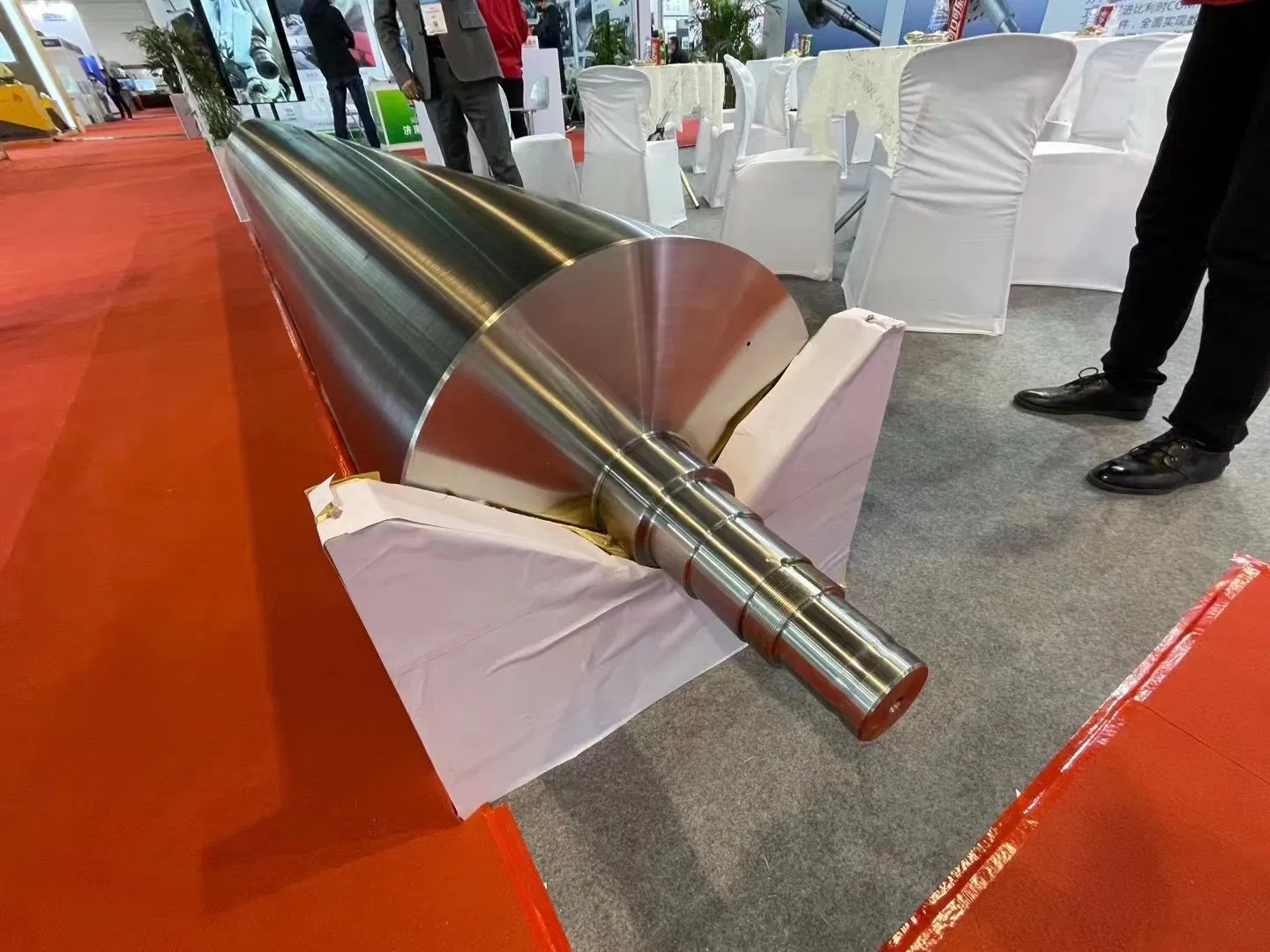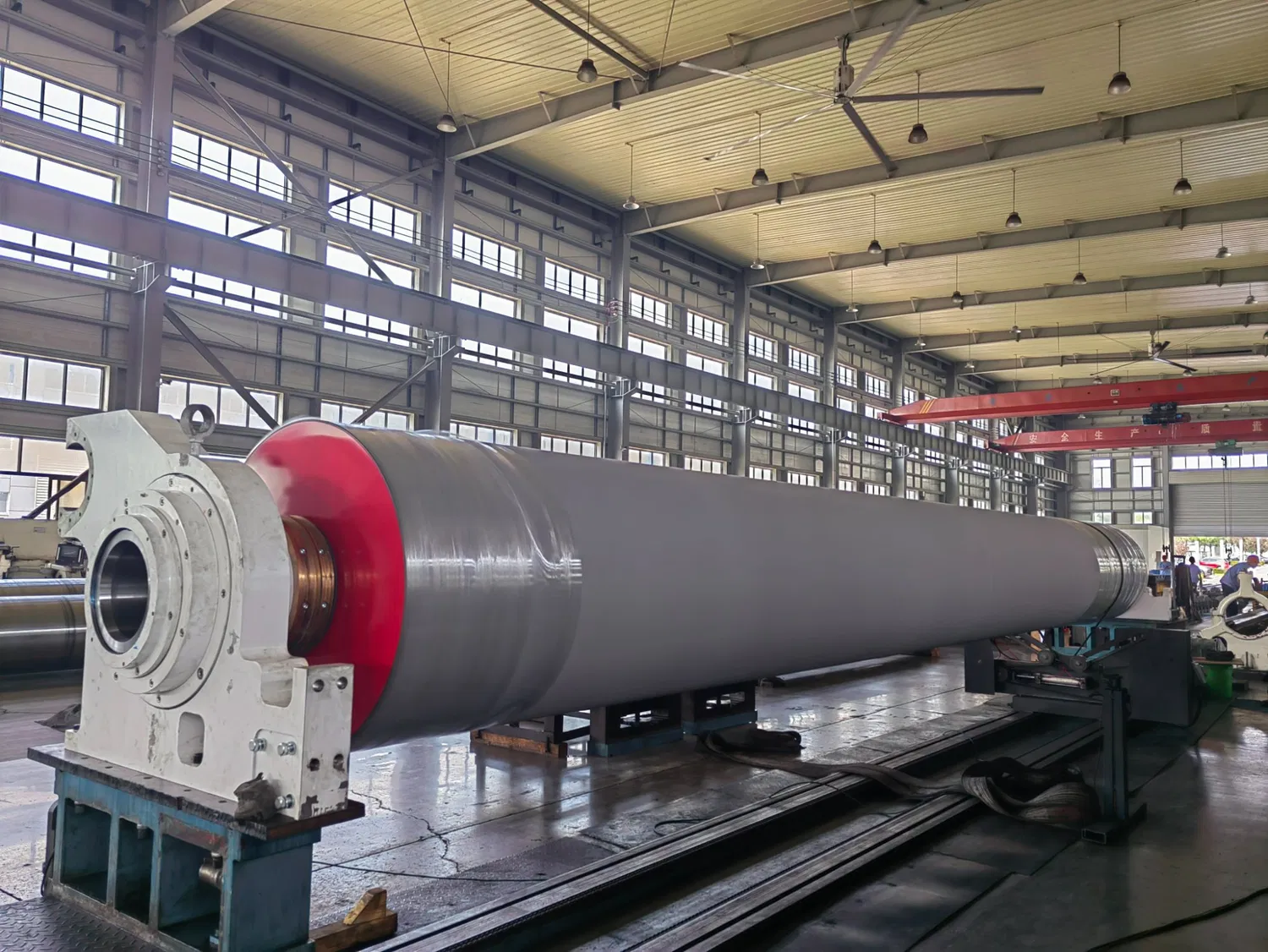# The Backbone of Paper Production: Exploring the Essential Types of Paper Machine Rolls
The pulp and paper industry is a marvel of engineering, transforming raw fibers into the countless paper products we use daily. At the heart of this complex process are paper machines, intricate systems where the magic happens. And within these machines, a crucial, often unsung, component plays a vital role: the paper machine roll. Frankly speaking, without the right types of paper machine rolls for pulp and paper industry applications, efficient and high-quality paper production would be impossible. These rolls are not just simple cylinders; they are precision-engineered components, each designed for a specific function, from dewatering and pressing to guiding and finishing.
Have you ever wondered what makes a roll suitable for pressing versus one used for guiding? The answer lies in their design, materials, and the specific demands of each stage in the papermaking process. In this comprehensive exploration, we'll delve into the diverse world of paper machine rolls, understanding their fundamental types, their unique characteristics, and why they are so indispensable to the pulp and paper industry.
## Understanding the Core Functions of Paper Machine Rolls
Before we dive into the specific types, it's essential to grasp the fundamental roles these rolls perform. Paper machine rolls are the workhorses of the entire operation, involved in almost every stage of transforming pulp slurry into a finished sheet. Their primary functions can be broadly categorized as:
* Dewatering: Removing water from the pulp slurry is a critical first step. Rolls in the forming and press sections are designed to facilitate this, squeezing out water efficiently. * Pressing: Applying controlled pressure is essential to consolidate the paper web, improve its strength, and further reduce moisture content. Press rolls are specifically engineered for this task. * Guiding and Supporting: Many rolls act as idlers, guiding the paper web smoothly through the machine and providing support to prevent sagging or tearing. These are often referred to as felt rolls or wire rolls. * Drying: While the main drying section utilizes heated cylinders, specific rolls might be involved in guiding the sheet through this high-temperature environment. * Calendering and Finishing: The final stages often involve rolls that smooth, polish, and impart specific surface characteristics to the paper, such as gloss or texture.
The selection of the correct types of paper machine rolls for pulp and paper industry needs is paramount. It directly impacts production speed, paper quality, energy consumption, and the overall lifespan of the machinery.
## Key Types of Paper Machine Rolls and Their Applications
The sheer variety of paper machine rolls can be daunting, but they can be categorized based on their function and location within the paper machine. Let's explore some of the most significant types.
### 1. Forming Section Rolls
The forming section is where the paper web is initially created from the pulp slurry. Rolls in this section are crucial for initial dewatering and sheet formation.
#### 1.1. Breast Roll
The breast roll is typically the first roll the stock hits on the forming fabric (wire). Its primary purpose is to distribute the stock evenly across the width of the machine and to support the forming fabric. It's usually a large-diameter, dynamically balanced roll.
#### 1.2. Couch Roll
Located at the end of the forming section, the couch roll is a critical dewatering roll. It picks up the formed sheet from the forming fabric and transfers it to the press section. Couch rolls often have a grooved surface to allow water to escape more easily, enhancing dewatering. In my experience, the efficiency of the couch roll significantly impacts the subsequent stages of papermaking.
#### 1.3. Table Rolls
These are a series of smaller diameter rolls located beneath the forming fabric in the forming section. Their main function is to support the fabric and to create turbulence in the stock, which helps in fiber drainage and sheet formation. They are arranged in a specific pattern to optimize water removal.

### 2. Press Section Rolls
The press section is where the paper web is compacted under pressure to remove more water and improve its physical properties like strength and smoothness. This section typically consists of several pairs of rolls.
#### 2.1. Press Rolls (Primary, Secondary, Tertiary)
These are the workhorses of the press section. They are typically large-diameter, heavy-duty rolls, often made of granite, steel, or composite materials. They operate in pairs, with the paper web passing between them. The pressure applied by these rolls squeezes out water and consolidates the sheet. The number of press nips (pairs of rolls) and the pressure applied are carefully controlled to achieve the desired paper properties.
* Primary Press Rolls: These are usually the first pair of rolls the sheet encounters and often have a grooved or blind-drilled surface to facilitate water removal. * Secondary and Tertiary Press Rolls: Subsequent press rolls may have smoother surfaces and are designed to apply increasing pressure for further dewatering and sheet consolidation.
#### 2.2. Suction Press Rolls
A specialized type of press roll, the suction press roll has a perforated shell and an internal vacuum system. As the paper web passes over it, the vacuum draws water out of the sheet and the felt, significantly enhancing dewatering efficiency. These are invaluable for achieving high dry content before the drying section.

### 3. Dryer Section Rolls
The dryer section is where the remaining moisture is evaporated from the paper web using heat. While primarily composed of large, heated cylinders, several types of rolls are involved in guiding and supporting the sheet through this section.
#### 3.1. Dryer Felt Rolls
These rolls support and guide the dryer felts, which press the paper web against the hot dryer cylinders. They ensure even contact and efficient heat transfer.
#### 3.2. Dryer Guide Rolls
These rolls help maintain the correct tension and path of the paper web as it travels through the dryer section. They are crucial for preventing wrinkles or breaks.
### 4. Calender and Reel Section Rolls
These sections are responsible for the final finishing of the paper.
#### 4.1. Calender Rolls
Calenders are stacks of rolls, often made of chilled iron or composite materials, that the paper passes through under pressure. They are used to smooth the paper surface, improve gloss, and control thickness. Different types of calender rolls exist, including king rolls (larger diameter) and queen rolls (smaller diameter), and specialized rolls like swimming rolls that can adjust their pressure profile across the width. Interestingly enough, achieving a uniform surface finish heavily relies on the precise engineering and material of these calender rolls.
#### 4.2. Reel Spool
The reel spool is a large-diameter roll around which the finished paper is wound to form a large roll, known as a parent roll or jumbo roll.
### 5. Specialty Rolls
Beyond these primary categories, numerous specialty rolls are designed for specific functions or paper grades.
#### 5.1. Size Press Rolls
In machines equipped with a size press, these rolls apply sizing agents to the paper surface to improve its printability and water resistance. They are often rubber-covered to ensure even application.
#### 5.2. Coating Rolls
For coated papers, specialized rolls are used to apply coating materials. These can include applicator rolls, metering rolls, and backing rolls, each with precise surface characteristics.
#### 5.3. Idler Rolls and Guide Rolls
These are generic terms for rolls used throughout the machine to support and guide the paper web or felts. They are essential for maintaining the integrity of the web's path.
## Materials and Construction of Paper Machine Rolls
The materials used in the construction of paper machine rolls are as varied as their functions. The choice of material depends on the operating conditions, including pressure, temperature, chemical exposure, and the need for specific surface properties.
* Steel: Commonly used for its strength and durability, especially in press and dryer sections. Stainless steel is often employed to resist corrosion. * Cast Iron: Particularly chilled cast iron, is a popular choice for calender rolls due to its hardness, wear resistance, and ability to achieve a smooth, polished surface. * Granite: Used for some high-pressure press rolls, offering excellent hardness and a smooth surface. * Rubber and Composites: Many rolls, especially in the press and size press sections, are covered with specialized rubber compounds or advanced composites. These coverings provide cushioning, improve grip, and can be engineered for specific nip profiles. * Ceramics: Increasingly used for certain high-performance applications, offering exceptional hardness and wear resistance.
The internal construction also varies. Some rolls are solid, while others are hollow and may incorporate internal structures for support or to manage temperature and pressure. Dynamic balancing is a critical aspect of roll manufacturing to ensure smooth operation at high speeds.
## The Importance of Roll Maintenance and Selection
The proper selection and maintenance of paper machine rolls are absolutely critical for the efficient and profitable operation of any pulp and paper mill.
* Selection: Choosing the right types of paper machine rolls for pulp and paper industry operations involves considering the specific paper grade being produced, the machine speed, the required nip pressures, and the desired surface finish. Consulting with equipment manufacturers and experienced engineers is often necessary. * Maintenance: Regular inspection, cleaning, and maintenance are essential to prolong the life of rolls and ensure consistent paper quality. This includes monitoring for wear, damage, and surface irregularities. Proper lubrication and alignment are also key. Neglecting maintenance can lead to premature roll failure, costly downtime, and compromised product quality. Many experts agree that a proactive maintenance schedule is far more economical than reactive repairs.
The intricate interplay of these various types of paper machine rolls for the pulp and paper industry is what allows for the continuous, high-volume production of paper products we rely on every day. From the initial forming of the sheet to its final finishing, each roll plays an indispensable part in this complex and fascinating manufacturing process.
For more detailed information, please visit our official website:paper machine rolls
About the author: With over 15 years of hands-on experience in pulp and paper mill operations, Anya Sharma is a recognized expert in papermaking machinery. Her career has focused on optimizing production efficiency and paper quality through meticulous equipment management and process improvement. Anya holds a degree in Mechanical Engineering and is passionate about sharing her insights into the critical components that drive the industry forward.


